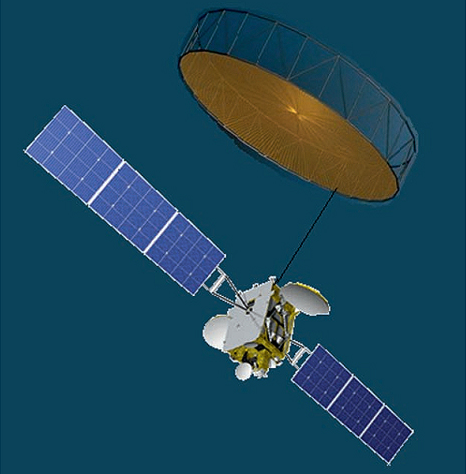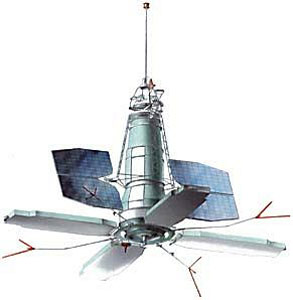Olymp (Luch) Satellite

The payload of the Proton return to flight mission is known as Luch or Olymp (Olimp). It is known that the satellite was developed and manufactured by ISS Reshetnev for operation by the Russian Ministry of Defence. Like many MOD missions, details on the Olymp satellite are not made available to the public. In an article published by the Russian Newspaper “Kommersant,” the actual operator of the satellite or at least part of its payload is the Russian intelligence agency FSB (Federal Security Service of the Russian Federation).
According to the same report, the satellite will fulfill two purposes – electronic intelligence (SIGINT) and providing secure communications for use by the Russian government. Additional information provided by Tsenki indicates that the Olymp satellite shares commonality with Yamal and Luch Geostationary Communications satellites manufactured by ISS Reshetnev.
Luch is the designation used for Russian Tracking and Data Satellites placed in Geostationary Orbit to relay communications to and from spacecraft in lower orbits, including the International Space Station. Three Luch-5 satellites were launched in 2011, 2012 and 2014 to achieve the operational constellation that provides coverage across the globe. The Luch-5 satellites are based on the Ekspress-1000A satellite platform developed by ISS Reshetnev
Yamal satellites are operated by Gazprom Space Systems to provide commercial communications services. A number of Yamal satellites have been produced by ISS Reshetnev based on the Ekspress-2000 and Ekspress-1000 spacecraft platforms.

Olymp is most likely based on the Ekspress-2000 platform with a mass topping out at just over three metric tons based on Proton’s payload capability for direct Geostationary injections.
In a study conducted by the Central Scientific Research Institute, a multi-purpose satellite design of ISS Reshetnev is presented based on the Ekspress-2000 platform equipped with a communications payload and a large deployable antenna suited for signals intelligence purposes. This design is a very likely candidate for the Olymp mission.
Originally, the technology of large-size, unfurlable umbrella antennas was to be tested on a mission known as Yenisey A1. The Yenisey A1 project was adapted from the Luch 4 satellite that was originally planned to supplement the Luch-5A and 5B communications satellites. After Luch 4 was canceled in favor of the smaller Luch-5V satellite, the project was re-designated to become a pure technology demonstration mission.
The Yenisey A1 design calls for a 3,000-Kilogram satellite based on the Ekspress-2000 bus featuring several conventional deployable communication antennas and one large mesh antenna with a diameter of six to 18 meters. The current status of the Yenisey A1 project is unknown – whether the 2015 launch date still stands is doubtful.
A patent has been filed by ISS Reshetnev detailing the design of an umbrella-type parabolic mesh antenna with aperture sizes of 6 to 18 meters. Geostationary Signals Intelligence satellites are typically outfitted with large parabolic reflecting dishes to pick up radio emissions from ground-based targets.
The early U.S. SIGINT satellites known as Canyon (1968-1977) operated in near-geosynchronous orbits and were equipped with reflecting dishes ten meters in diameter. Over the years, more advanced satellites with even bigger antennas were launched (Jumpseat, Magnum) leading up to the current generation of U.S. SIGINT satellites in Geostationary Orbit known as Orion. The Orion satellites are known as the largest satellites ever launched based on the diameter of their antennas that exceeds 100 meters.

Russian ELINT satellites started out in the mid-1960 when the Tselina program was initiated, but to date, Russian Signals intelligence spacecraft were only operated from Low Earth Orbits. In its initial phase, Tselina satellites flew in two versions – Tselina-O for low-sensitivity measurements to provide an overview of radio activity and Tselina-D for high-sensitivity measurements. More than 100 Tselina-1 satellites were launched before being succeeded by the Tselina-R and Tselina-2 that were launched until 2009.
A new system known as Liana is currently under development to replace the Tselina satellites with Lotos spacecraft (the first experimental version launched in 2009) and also replace the naval US-PM satellites with Pion spacecraft.
An expansion of SIGINT systems into Geostationary Orbit has not been announced by the Russian Ministry of Defence, but the Olymp satellite could be the first test mission to evaluate the benefit of this type of SIGINT application.
